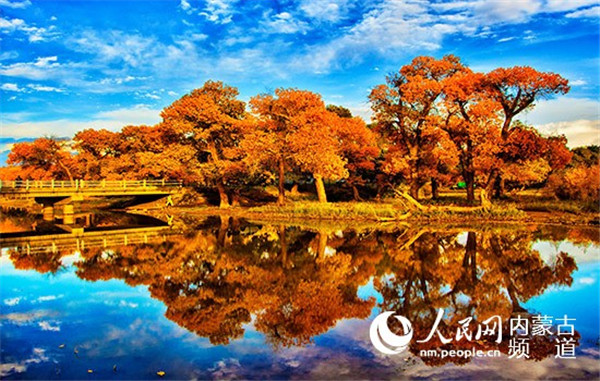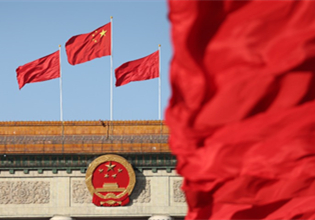Alshaa League's achievements over the past 70 years

A photo captures the Populus euphratica forest in Alshaa Leagua, North China's Inner Mongolia autonomous region. [Photo/nm.people.cn]
The overall GDP of Alshaa League, North China's Inner Mongolia autonomous region, reached 28.33 billion yuan ($3.97 billion) in 2018, 506 times more than its GDP in 1980 when the league was founded. Its fiscal revenue was 4.73 billion yuan in 2018, 517 times higher than in 1980, according to statistics announced by local officials at a press conference held in Hohhot, capital of the region, on Aug 27.
The press conference is part of a series of conferences being held in Inner Mongolia to report on the region's achievements over the past 70 years and to celebrate the 70th anniversary of the founding of the People's Republic of China.
Alshaa is the largest and least populous league in Inner Mongolia. The disposable income of urban residents in the league reached 40,407 yuan and in 2018, 72 times the amount in 1980. For rural residents, disposable income reached 19,854 yuan, 95 times the 1980 number. The coverage rates of social endowment and basic medical insurance have reached 100 percent and 99 percent, respectively. In July 2018, 39 impoverished gacha (the Mongolian word for "village") and 2 region-level impoverished banners in the league rose from poverty.
The local government has been accelerating the pace of structural adjustment, optimizing the industrial structure, eliminating backward, low-end, and excess production capacity, and building an ecological economic system.
The local government has also fostered and developed new industries, and Alshaa has held many festivities and competitions. In the first half of 2019, 45.84 million tourists visited the league (a year on year increase of 26 percent), bringing in 4.36 billion yuan ( a year on year increase of 29.2 percent). The urbanization rate of the league has increased to 78.4 percent and the per capita living area reached 42.2 square meters for urban residents and 38 square meters for rural residents.
The league boasts unique plants like the desert cistanche and herba cynomorii and has been working to develop desert-related industries. It hopes to build a national demonstration center for ecological desert industries. Furthermore, the league's Desert Industry Innovation and Entrepreneurship Competition has officially been named a "national-level competition" and will be held in Alshaa League at the end of September.
The league has also made great efforts to develop a national clean energy demonstration center, and has an installed capacity of 1.31 million kilowatts in renewable energy.
The league has also been taking advantage of its local garrisons and armed services to develop a civil-military integrated aerospace information technology industry, specifically focusing on building a national civil-military aerospace center.
Alshaa is also making use of Ceke Port and Uliji Port to develop a pan-port economy and build intself into an important international corridor serving for the Silk Road Economic Belt and the China-Russia-Mongolia Economic corridor.
The league has 38.44 million mu (2.56 million hectares) in forest resources, and its forest coverage rate has increased from 2.96 percent in 1980 to 8.01 percent in 2018. For the past five years, the total afforestation area in the league has increased by more than 2 million mu.



 Print
Print Mail
Mail





